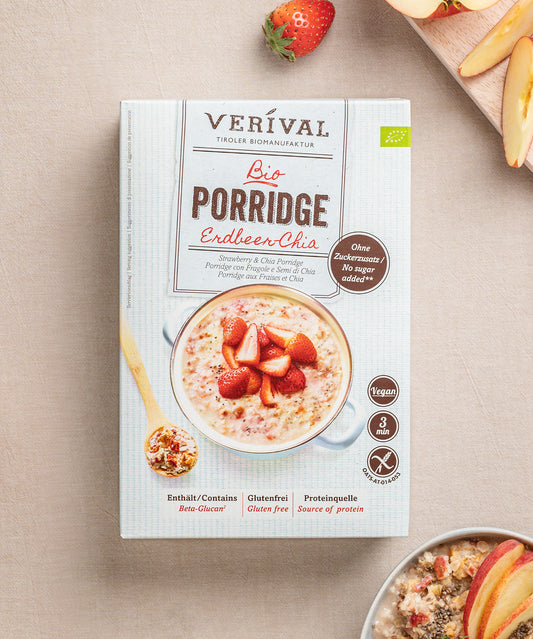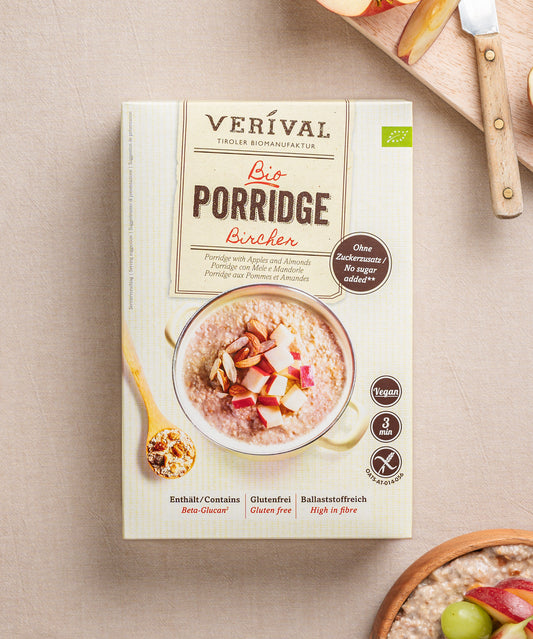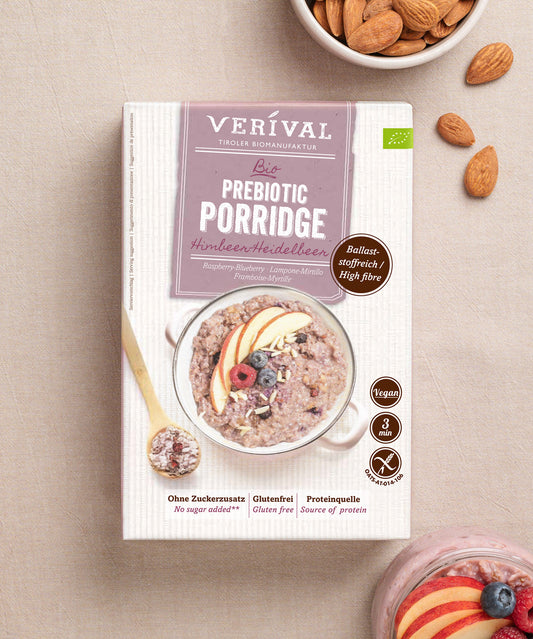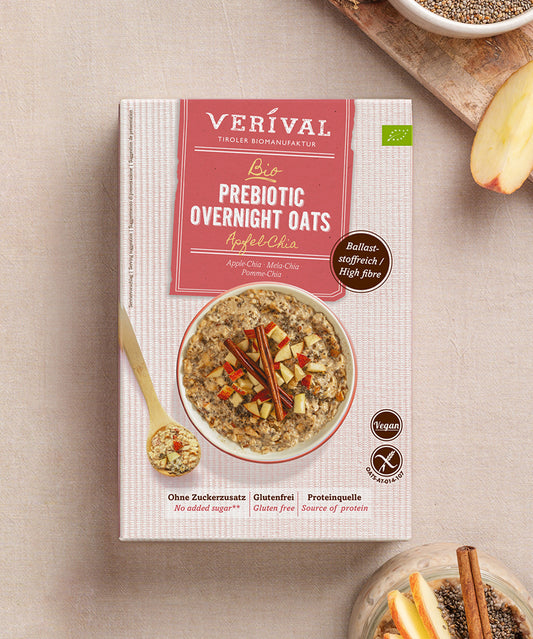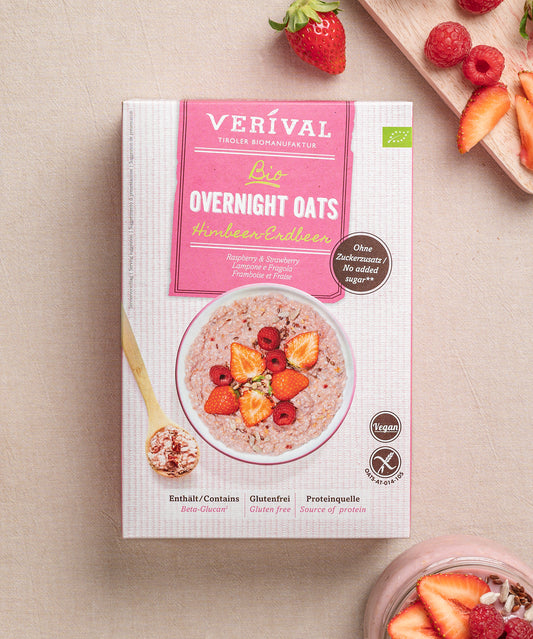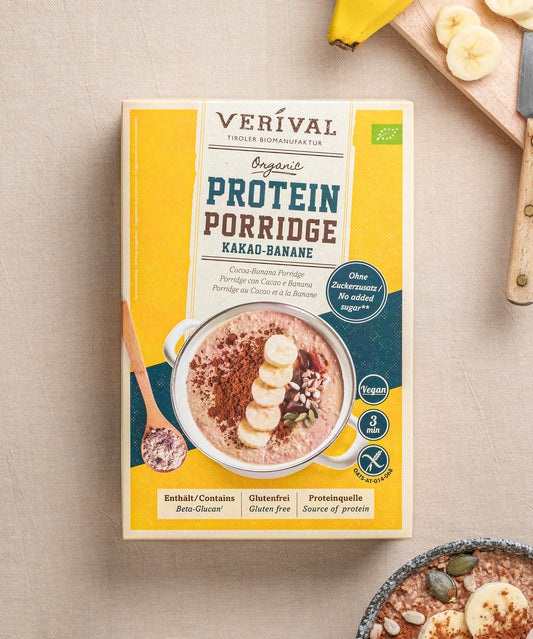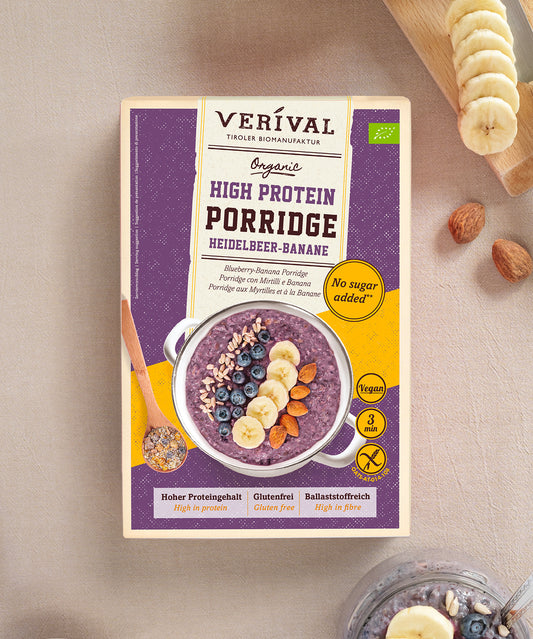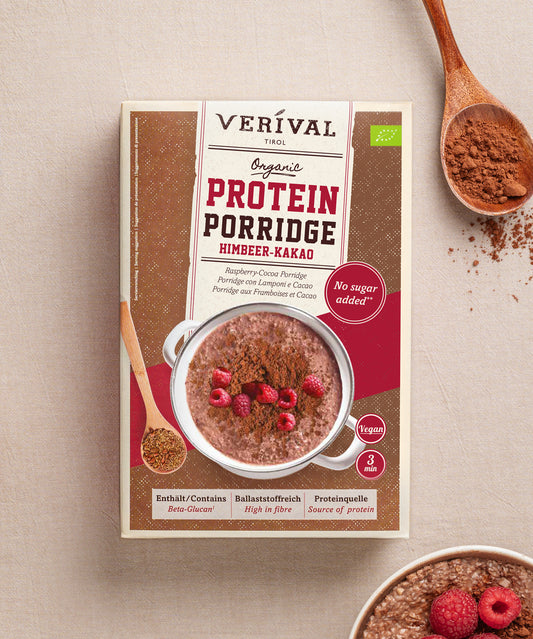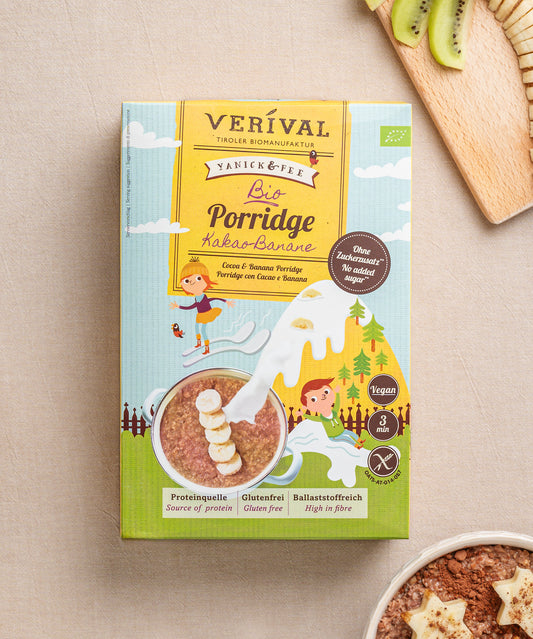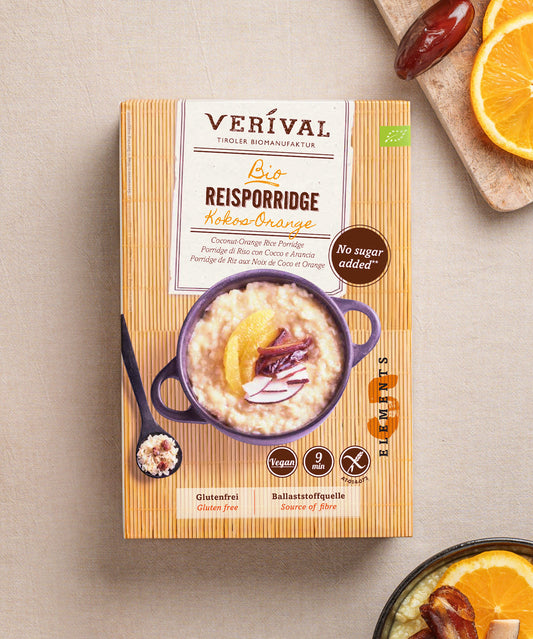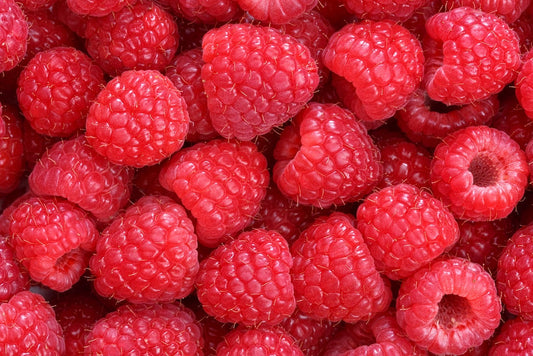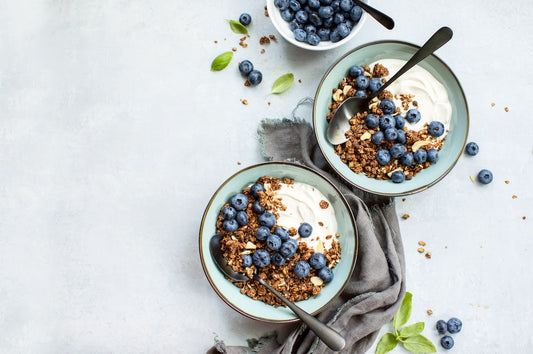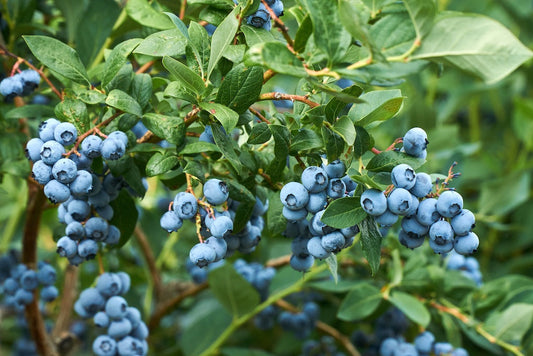A balanced diet and a healthy gut play an important role in the health of the body. An important part of a healthy diet is dietary fiber. These play an important role in promoting digestion, preventing constipation and reducing the risk of bowel cancer.
It is especially important to make sure you start the day healthily, especially at breakfast time. With oats, you can get enough fiber in the morning. But how does fiber actually work and why is it so healthy and important for our bodies? In this blog post, we will take a closer look at the importance of fiber for healthy digestion.
Discover the Verival Porridge World here
Why fiber is important for healthy digestion
A high-fiber diet plays a crucial role in promoting healthy digestion. Fiber is an important component of food that is not digested and passes through the intestines, helping to relieve constipation and prevent blockages. It also helps to reduce the risk of bowel cancer.
Dietary fiber for intestinal health
Dietary fiber aids digestion by absorbing water and softening stools. This facilitates their passage through the intestines and prevents constipation. Dietary fiber also helps to form and increase stool, which stimulates the bowels to empty regularly. A low-fiber diet can lead to constipation and other digestive problems because the body does not have enough fiber to adequately form stools and stimulate bowel movements.
In addition to promoting digestion, fiber also helps prevent colon cancer. Fiber-rich foods can help prevent colon cancer by supporting gut health. Dietary fiber helps to regulate the gut flora by promoting the growth of healthy intestinal bacteria and limiting the growth of pathogenic bacteria. A healthy intestinal flora is important for the prevention of bowel cancer and other diseases.
How dietary fiber works in the body
Dietary fiber is an important part of a healthy diet because it has a variety of benefits for the body. Dietary fiber works in the body by supporting and influencing various processes from the mouth to the intestines.
Staying full with fiber
At the beginning of the digestive process in the mouth, chewing fiber-rich foods for a long time is particularly important. When chewing, the fibers are broken down into smaller pieces, which makes them easier to absorb later in the digestive tract. In the stomach, fiber triggers slower digestion, causing food to move more slowly from the stomach into the intestines. This leads to a longer-lasting feeling of satiety and can help to avoid overeating. This effectively prevents cravings and keeps you feeling full for longer.
With fiber to a healthy digestion
When fiber reaches the intestines, it works by absorbing water and softening stools. This makes it easier for them to pass through the intestines and prevents constipation. Fiber can also help regulate the intestinal flora by promoting the growth of healthy intestinal bacteria and limiting the growth of pathogenic bacteria. A healthy intestinal flora is important for the health of the digestive system and the immune system.
There are two types of dietary fiber: soluble fiber and insoluble fiber. Soluble fiber dissolves in water and forms a kind of gel that slows the absorption of nutrients in the intestines. This helps to keep blood sugar levels stable and lower cholesterol levels. Insoluble fiber, on the other hand, helps to regulate bowel movements by absorbing water and softening stools.
Which foods are high in fiber?
A high-fiber diet is an important part of a healthy lifestyle. If you want to increase your fiber intake, there are many foods that are high in fiber and can easily be incorporated into your meals.
One of the best sources of fiber is fruit and vegetables. For example, a cup of raspberries contains about 8 grams of fiber, a medium-sized sweet potato about 4 grams, and a cup of broccoli about 5 grams. Half a cup of cooked beans or lentils also contains about 8 grams of fiber. Whole grain products such as whole grain bread, oatmeal, quinoa and brown rice are also good sources of fiber.
Nuts and seeds are also high in fiber. For example, a handful of almonds contains about 3.5 grams of fiber and an ounce of chia seeds contains about 11 grams. Dried fruits such as dates, figs and raisins are also high in fiber.
It is important to note that some foods that are considered high in fiber may also be high in fat and sugar. It is therefore advisable to consume high-fiber foods in combination with a healthy and balanced diet.
If you are having difficulty incorporating enough fiber into your diet, there are also fiber supplements on the market that can help meet your needs. However, these supplements should not be considered a substitute for fiber-rich foods.
A high-fiber diet offers many health benefits, including healthy digestion and a lower risk of various diseases. It is easy to incorporate high-fiber foods into your meals, and the foods mentioned above can help you meet your fiber needs.
Vegan breakfast from Verival? This way!
How much fiber do we need every day?
The recommended daily intake of fiber depends on various factors, such as age, gender and physical activity. However, it is generally recommended that adults should consume at least 25-30 grams of fiber per day.
For children, the recommended daily fiber intake varies according to age. In general, children aged 1-3 years should consume about 19 grams of fiber per day and children aged 4-8 years should consume about 25 grams of fiber per day. Adolescents aged 9-13 years should consume about 31 grams of fiber per day, while adolescents aged 14-18 years should consume about 38 grams of fiber per day.
A high-fiber diet offers many health benefits, including healthy digestion and a lower risk of various medical conditions. If you are having trouble getting enough fiber in your diet, try incorporating high-fiber foods like fruits, vegetables, whole grains, legumes, and nuts into your meals.
It is also important to drink enough water when you eat high-fiber foods. Fiber attracts water and can cause food to back up in your intestines if there is not enough fluid. For this reason, it is important to drink enough water throughout the day.
The different types of fiber
Not all dietary fibers are the same. They differ in their solubility, structure and effects on the body. There are basically two types of dietary fiber: soluble and insoluble.
Soluble dietary fiber
Soluble fibers dissolve in water and form a kind of gel. They are digested slowly and help to stabilize blood sugar levels. This type of fiber also binds to cholesterol and prevents it from being absorbed by the body. This can lower cholesterol levels and reduce the risk of cardiovascular disease. In addition, soluble fiber promotes the growth of beneficial gut bacteria, which are important for healthy digestion. Good sources of soluble fiber include oats, beans, apples, and flaxseed.
Insoluble fiber
Insoluble fiber, on the other hand, does not dissolve in water and moves relatively quickly through the gastrointestinal tract. This type of fiber can help prevent constipation by softening stools and increasing their volume. This makes it easier for them to pass through the intestines and improves digestion. Insoluble fiber also promotes the growth of beneficial intestinal bacteria and helps reduce the risk of colon cancer. Good sources of insoluble fiber include whole grains, vegetables, and nuts.
Fiber deficiency is not uncommon
Dietary fiber is essential for healthy digestion, but its importance is often underestimated. Fiber deficiency is not uncommon and can lead to various health problems in the long term.
The German Nutrition Society (DGE) recommends a daily fiber intake of at least 30 grams for adults. For children, it recommends that the daily fiber intake be adjusted according to age. However, many people do not achieve this recommendation and therefore suffer from a fiber deficiency.
Fiber deficiency can lead to various problems in the digestive tract. These include constipation, bloating and gastrointestinal discomfort. In addition, a low-fiber diet can increase the risk of certain diseases, such as colon cancer, cardiovascular disease and diabetes.
A low-fiber diet is often due to an insufficient intake of fruit, vegetables, whole grain products and legumes. However, these foods are particularly rich in fiber and should therefore be on the menu regularly.
To counteract a lack of fiber, foods rich in fiber should be integrated into the diet more often. These include whole grain bread, oats, legumes, vegetables and fruit. Nuts and seeds are also a good source of fiber.
In addition, the intake of fiber can be increased by using whole grain products instead of white flour products. Consuming high-fiber foods as snacks, such as apples or carrot sticks, can also help to increase your fiber intake.
How to incorporate more fiber into your diet
A high-fiber diet is important for your health, but many people don't consume enough of it. Here are some tips for incorporating more fiber into your daily diet.
Eat more fruit and vegetables: fruit and vegetables are good sources of fiber. Try to eat at least five portions of them every day. You can eat raw vegetables as a snack or side dish, or add them to your meals. You can consume fruit and vegetables in large quantities with porridge for breakfast as a topping.
Choose high-fiber carbohydrates: Whole grains, such as whole wheat bread, whole wheat pasta, brown rice, and oats, are high in fiber and easy to incorporate into your diet. Try to substitute whole grains for processed carbohydrates like white bread, cookies, and cakes. There's no limit, especially at breakfast time.
Legumes: Legumes such as lentils, beans and peas are an excellent source of fiber. They are also a good source of protein. Add them to soups, stews or salads or make a delicious vegetarian meal out of them. They also go particularly well with porridge!
Snacking on nuts and seeds: nuts and seeds such as almonds, walnuts and chia seeds are a great source of fiber and healthy fats. Whether with muesli, porridge or other breakfast options, nuts and seeds are perfect as a topping.
Drink enough water: Fiber needs water to work properly. You should always drink enough water to avoid constipation.
Oats as a healthy breakfast
Oats – an ideal source of fiber
Oats are an excellent source of fiber. They contain both soluble and insoluble fiber, which can help improve digestion and supply the body with important nutrients.
One of the biggest advantages of using oats as a source of fiber is their versatility. They can be incorporated into your diet in a variety of ways and are also inexpensive and easy to find.
Oats contain 1.7 grams of soluble fiber and 1.3 grams of insoluble fiber per 100 grams. The soluble fibers in oats, such as beta-glucan, have been shown to lower blood cholesterol levels. These form a kind of gel in the intestines and slow down the absorption of nutrients. This gives the body more time to absorb and process nutrients. The insoluble fiber in oatmeal helps prevent constipation by softening stools and making it easier for them to pass through the intestines.
Oat flakes as porridge are the perfect way to get enough fiber at breakfast time. Paired with lots of toppings, whether nuts, seeds or fresh fruit and berries, you'll start the day healthy.
Discover porridge - tips and recipes
The possible risks of a low-fiber diet
A low-fiber diet can cause serious health problems in the long term. Here are some of the possible risks of a low-fiber diet:
Digestive problems: A lack of fiber can cause constipation, as fiber helps move stool through the intestines. Without enough fiber, stool can become hard and dry, causing discomfort when you defecate.
Weight gain: Fiber helps promote satiety and control appetite, which can help you consume fewer calories. A low-fiber diet can cause you to consume more calories than you burn, which can lead to weight gain.
Cardiovascular disease: A low-fiber diet can increase the risk of cardiovascular disease because fiber can help lower blood cholesterol levels. High cholesterol can increase the risk of cardiovascular disease, such as heart attack and stroke.
Bowel cancer: A low-fiber diet can increase the risk of bowel cancer because fiber can help keep the bowels healthy and prevent blockages. A low-fiber diet can also promote the growth of cancer cells in the bowel.
Diabetes: A low-fiber diet can increase the risk of diabetes because fiber can help regulate blood sugar levels. A low-fiber diet can cause blood sugar levels to rise more quickly after eating, which can increase the risk of diabetes.
Get to know Verival sugar-free breakfast here
Conclusion
Dietary fiber plays an important role in promoting healthy digestion. It helps to prevent constipation, reduce the risk of bowel cancer and promotes the growth of beneficial gut bacteria. There are two types of dietary fiber, soluble and insoluble, both of which work in different ways in the body. While soluble fiber helps regulate blood sugar levels and lower cholesterol, insoluble fiber promotes bowel movements and supports gut health.
Unfortunately, many people suffer from a fiber deficiency, which can lead to an increased risk of digestive disorders, chronic diseases and weight gain. A high-fiber diet can help prevent these problems. There are many high-fiber foods that you can incorporate into your daily diet, such as whole grains, fruits, vegetables, legumes, and nuts. Oatmeal is particularly nutritious and an excellent source of fiber.
The recommended daily intake of fiber for adults is 25-38 grams per day, depending on age and gender. To incorporate more fiber into your diet, you should include high-fiber foods in your daily meals. Tips for increasing your fiber intake include adding vegetables to dishes, using whole grains, and eating high-fiber snacks like nuts and fruit.
It is important to maintain a high-fiber diet to promote healthy digestion and an overall healthy life. A low-fiber diet can lead to a variety of health issues, including digestive disorders, chronic conditions, and weight gain. By incorporating high-fiber foods into our daily diet and maintaining a balanced diet, we can improve our health and well-being.
Frequently asked questions
What are the best high-fiber foods?
There is a wide variety of high-fiber foods that are healthy for your body. The best foods include: spelt, oats, whole wheat flour, muesli with a high cereal content and especially oat bran.
How much fiber should you eat per day?
The recommendation for adults is at least 30 grams of fiber per day, ideally 40 grams would be appropriate. The average consumption of an adult is usually 22 grams, often not even this is reached.
What types of fiber are there?
There are soluble and insoluble fibers and these also work differently. Insoluble fiber is mostly found in whole grain products, mushrooms or legumes. Soluble fiber is mostly found in fruits and vegetables.
What effect does fiber have?
Dietary fiber ensures that you stay full for longer and therefore helps to prevent food cravings and obesity. It also stimulates the bowels and strengthens the body's defences.
Can dietary fiber also be harmful?
Fiber is actually very healthy – it's just that not everyone tolerates it the same. In any case, you should make sure that you drink enough when you consume large amounts of fiber. Only then can you benefit from it.
What foods contain the most fiber?
Most fiber is found in whole grain products, as well as oats and oat bran.
Which dietary fibers are good for the intestines?
In principle, all dietary fibers are good for the intestines. The most important thing is that you consume enough. At least 30 grams per day is a good guideline.
What are probiotic foods?
Probiotic foods contain microorganisms that enter our intestines in large quantities and have a positive effect on our digestion. These microorganisms include lactic acid bacteria such as lactobacilli and bifidobacteria, as well as certain yeast fungi.
What are prebiotic foods?
Prebiotics are special indigestible food components. They serve as food for the useful bacteria in the intestinal flora. We cannot digest or absorb them ourselves – they enter the intestines undigested and are used by the bacteria there as a source of energy.


